Let me begin by saying how honored and excited I am to be a part of the Trout Unlimited family as the new CTU Grassroots Coordinator. Joining this team of dedicated staff, passionate volunteers, and avid sportsmen and women is a dream come true.
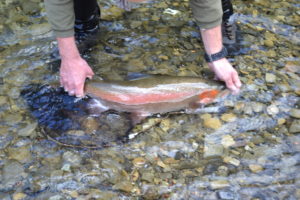 Growing up on the dirt roads just east of Parker, Colorado, I was fortunate enough to explore the many streams and lakes that this great state has to offer. In particular, I often found myself hiking up small creeks in the Gunnison Basin in search for the pockets of eagerly-feeding brookies that never once questioned my poor presentation or choice of fly. By the time I was twelve years old, I had my own fly rod and I was hooked.
Growing up on the dirt roads just east of Parker, Colorado, I was fortunate enough to explore the many streams and lakes that this great state has to offer. In particular, I often found myself hiking up small creeks in the Gunnison Basin in search for the pockets of eagerly-feeding brookies that never once questioned my poor presentation or choice of fly. By the time I was twelve years old, I had my own fly rod and I was hooked.
After graduating from the University of Colorado with a political science degree focused on land management and environmental policy, I did what any young conservation professional would do – I told my parents that I was moving to Crested Butte to be a ski bum. This was certainly not the big life decision they were expecting, but (as parents do) they understood my deep connection to the mountains and rivers of Colorado.
While backcountry skiing and raft guiding in the Gunnison Valley certainly had their perks (and still do), after two years into my ski-bum career, I felt a strong drive to get out and do more. That’s when the second “big life decision” phone call happened: Mom, Dad, I am moving to New Zealand to go fishing. What started out as an adventure on the other side of the globe quickly turned into a vision for my future. While living on the North Island, I was lucky enough to work for an outdoor adventure company that paired rafting and fishing with conservation efforts to protect a native species of duck. The work was more than simply taking clients out for a fun day on the water or getting them into some big fish (and yes, they are big!) – we were out there to check traps, monitor mating pairs, and discuss the effects of the local hydropower regime on the native ecosystem. This was what I wanted to do when I returned home.
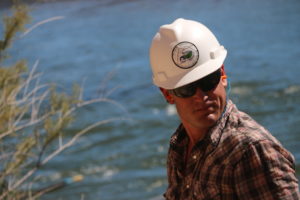 After moving back to Gunnison in 2013, I worked with a team of fellow raft guides and conservationists to start a non-profit rafting company. River Restoration Adventures for Tomorrow (RRAFT) is a small outfitter dedicated to protecting critical watersheds through community engagement and hands-on restoration work. Over the past three seasons, our team has worked with over 400 community volunteers and youth to conduct various conservation projects on over 300 miles of riparian corridor throughout Colorado and Utah. Our trips ranged from cottonwood planting projects with Delta and Cedaredge High School youth, to overnight trips with the Adaptive Sports Center and Peace of Adventure, to 10-day surveys of invasive plant species along the Colorado River in Cataract Canyon with the National Park Service and the Southwest Conservation Corps Ancestral Lands crews. Not only were we making a difference for the rivers, we were helping to inspire and engage the next generation of stewards.
After moving back to Gunnison in 2013, I worked with a team of fellow raft guides and conservationists to start a non-profit rafting company. River Restoration Adventures for Tomorrow (RRAFT) is a small outfitter dedicated to protecting critical watersheds through community engagement and hands-on restoration work. Over the past three seasons, our team has worked with over 400 community volunteers and youth to conduct various conservation projects on over 300 miles of riparian corridor throughout Colorado and Utah. Our trips ranged from cottonwood planting projects with Delta and Cedaredge High School youth, to overnight trips with the Adaptive Sports Center and Peace of Adventure, to 10-day surveys of invasive plant species along the Colorado River in Cataract Canyon with the National Park Service and the Southwest Conservation Corps Ancestral Lands crews. Not only were we making a difference for the rivers, we were helping to inspire and engage the next generation of stewards.
Rivers hold a special place in my heart. They are the lifeblood of our public lands and the key to healthy communities. As we enter this new era of water management, a changing climate, and significantly increased demand for flows, our rivers and headwater streams will need our help now more than ever.
I am excited to be a part of the Colorado Trout Unlimited family as we all work together to protect and restore these critical ecosystems. I am optimistic in Coloradoans’ abilities to find common ground and their ability to build bridges that allow for mutual benefit. And I am looking forward to working with all of you – the driving force of TU – to protect our watersheds for the generations to come. Thank you all for the hard work, resources, and time that you give for our public lands. I am looking forward to meeting you and seeing you out on the river!






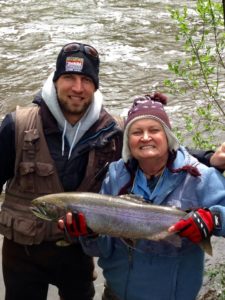 After moving South in the early 1990s I transferred to the Southern Colorado Greenback Chapter of TU. After several years, I was on the Board again, serving mainly in the capacity of Communications Chairman. I will be retiring this year, but plan on maintaining an active role in the chapter. Hubby Paul and I are Life Members, and proud of that.
After moving South in the early 1990s I transferred to the Southern Colorado Greenback Chapter of TU. After several years, I was on the Board again, serving mainly in the capacity of Communications Chairman. I will be retiring this year, but plan on maintaining an active role in the chapter. Hubby Paul and I are Life Members, and proud of that.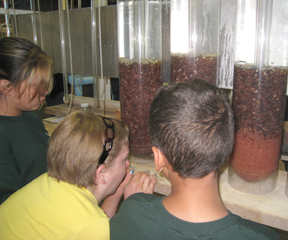 Kids’ education. Several years ago, Jenny Kedward from the local Sierra Club, Pat McGraw, then-President of our Chapter, and I collaborated to do a two-day summer camp program for 12-14 year olds in our community that concentrated on water education and fishing. We conducted it for four years in a row. Our chapter’s Frostbite Fish-Off Tourney, held for several years, is a close second.
Kids’ education. Several years ago, Jenny Kedward from the local Sierra Club, Pat McGraw, then-President of our Chapter, and I collaborated to do a two-day summer camp program for 12-14 year olds in our community that concentrated on water education and fishing. We conducted it for four years in a row. Our chapter’s Frostbite Fish-Off Tourney, held for several years, is a close second.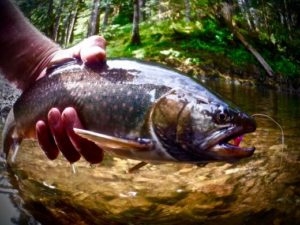 But there is one scenario where tenkara rods really shine, and that is for winter tailwater fishing. Colorado is home to many productive winter fisheries, most located below big dams. Tailwaters include the Blue River below Dillon Reservoir, the Frying Pan below Ruedi, the Yampa below Stagecoach, and the Taylor, to name a few. What these waters have in common is a steady flow of (relatively) warm water flowing all winter that is conducive to insect hatches, and in turn to feeding fish. Waters like this are justifiably famous for the big trout they produce, but fishing them during the high season usually means casting right beside many others doing the same thing. The nice thing about visiting them in the winter when everyone else is on the slopes, or inside nice and warm and dreaming of April, is that you can often have these normally busy waters all to yourself.
But there is one scenario where tenkara rods really shine, and that is for winter tailwater fishing. Colorado is home to many productive winter fisheries, most located below big dams. Tailwaters include the Blue River below Dillon Reservoir, the Frying Pan below Ruedi, the Yampa below Stagecoach, and the Taylor, to name a few. What these waters have in common is a steady flow of (relatively) warm water flowing all winter that is conducive to insect hatches, and in turn to feeding fish. Waters like this are justifiably famous for the big trout they produce, but fishing them during the high season usually means casting right beside many others doing the same thing. The nice thing about visiting them in the winter when everyone else is on the slopes, or inside nice and warm and dreaming of April, is that you can often have these normally busy waters all to yourself.


